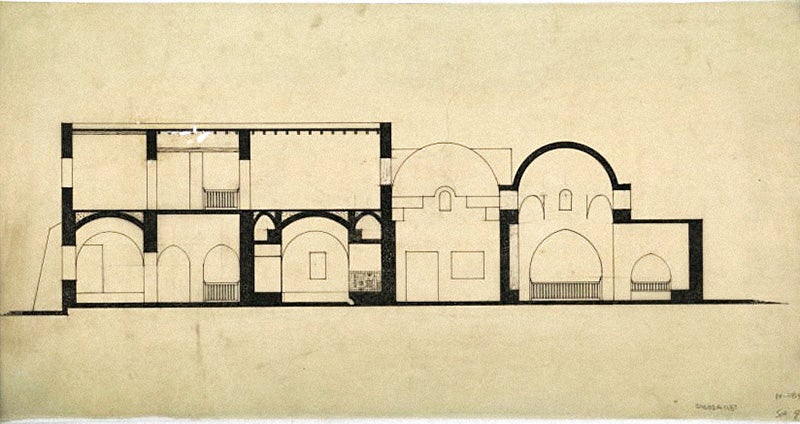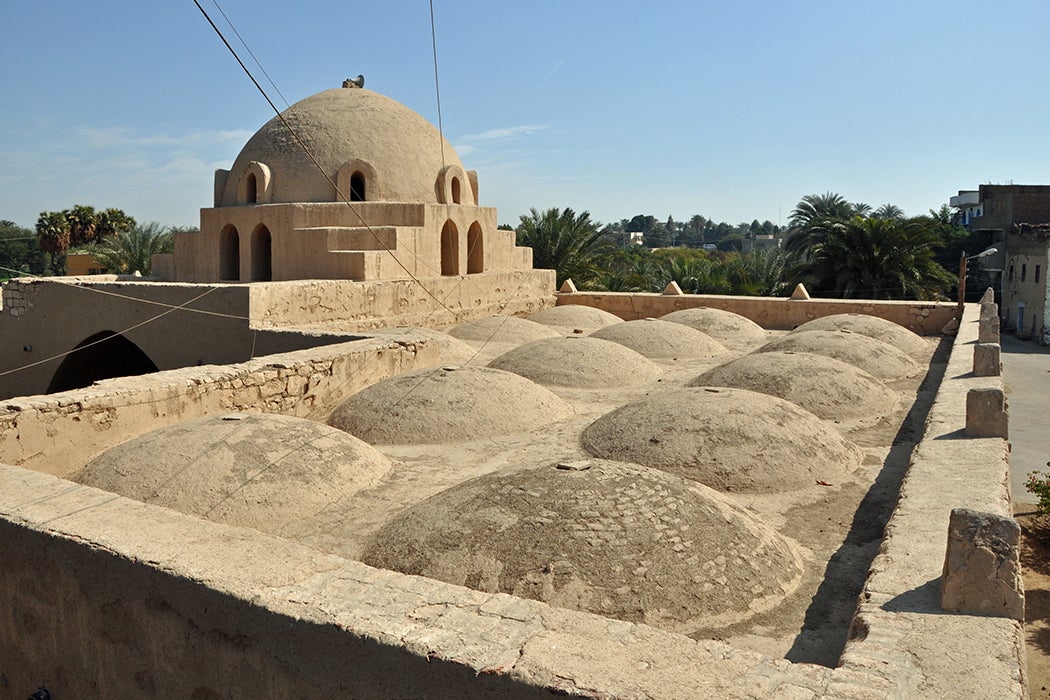Egyptian architect Hassan Fathy had high hopes for his design for New Gourna (New Qurna). In designing a new village for the residents being forced to move from “old” Gourna, Fathy sought to create a contemporary vernacular architecture for a post-colonial Egypt. Unfortunately, the result was full of contradictions, highlighting the distance between the architect’s intentions and the interpretation of its intended residents.
Fathy was commissioned by the Egyptian government in 1945 to plan a village for the resettlement of the residents of Gourna. Living within the area of the ancient ruins of the Theban Necropolis on the west bank of the Nile River, opposite the city of Luxor, Gourna’s inhabitants were viewed as an impediment to tourism development by the government.
When considering how Fathy would approach such a project, architectural historian James Steele suggests that Fathy’s
emphasis of approach is not one of the architect as omniscient hero who is providing a soul-cleansing spatial experience for the uninitiated mass, but rather of someone who first asks the question: “Is this for man, or something else?”
Fathy wanted an urban space that would work for and improve the lives of its residents. Describing his time working on New Gourna, Fathy writes that he
lived among the villagers of Gourna, trying to advise and organize the latent architectural and artistic forces existing among the villagers and, through their corporation, to achieve a well-organized and alive human settlement.
New Gourna’s architecture consisted mostly of modest mud brick structures, chosen for their simplicity and affordability. In addition, they could be constructed with local materials, without having to rely on international resources. The village’s focal point was a large central square, around which were placed important community buildings, such as the mosque and village hall. Grid-inspired yet meandering streets and narrow alleys led to the many residential quarters.

To develop an appropriate aesthetic, Fathy studied the architecture around him. This was a moment in Egyptian history when, after decades of British occupation, the country was working to redefine its national identity. Fathy explored that identity through architectural history. His designs pulled from a variety of historical Egyptian sources, including Coptic and Nubian architecture. With these, he created his own vernacular style, but in the process, he alienated the very people who were meant to live in New Gourna.

A major issue with the new village was a design that failed to connect to the lives of its intended residents. For instance, Fathy made courtyards an essential part of the residences. However, courtyards were rarely used in that region of Egypt, and when they were used, they served a more practical function as a work area, not a space for the leisure and enjoyment as Fathy intended.
Even more curious for the future residents was the inclusion of domes in the house designs. As architectural forms, domes typically held a spiritual significance; they were associated with mosques and tombs, not homes. Using them in residential structures wasn’t just unusual, it was disconcerting. Despite studying vernacular Egyptian architecture to create a native design that rejected the influence of European modernism, Fathy still created a built environment that felt foreign to those who were supposed to live there.
Weekly Newsletter
And in the end, they didn’t live there. Construction progressed slowly over three years and in 1948, Fathy gave up on the project. By that time, less than a quarter of the planned 900 buildings had been built and the residents of “old” Gourna were still refusing to move from their existing homes.
Though he initially considered the project a failure, Fathy returned to it in the 1970s, recasting it as an alternative to the rationalist designs of high modernism. As the universalizing assumptions of modernism spread around the globe, architects, including Fathy, turned to non-Western architecture as a counterbalance.
“In this context,” writes architectural historian Panayiota I. Pyla, “Fathy’s ideas gained an altogether new appeal, and New Gourna became an icon of the timeless wisdom of age-old building traditions.”
New Gourna is now celebrated for its design by architects and cultural heritage professionals alike. As building technology scholar Nadia M. Alhasani explains, “[i]n spite of the project’s failure to bring people back to the village, New Gourna remains an experiment that is studied and emulated throughout the world today.” It was Fathy’s overall approach—rejecting European ideas of modernism and arguing that countries outside of the West had the tools in their own histories to develop in a way that suited their needs—that made New Gourna a significant urban plan, despite its deficiencies.







